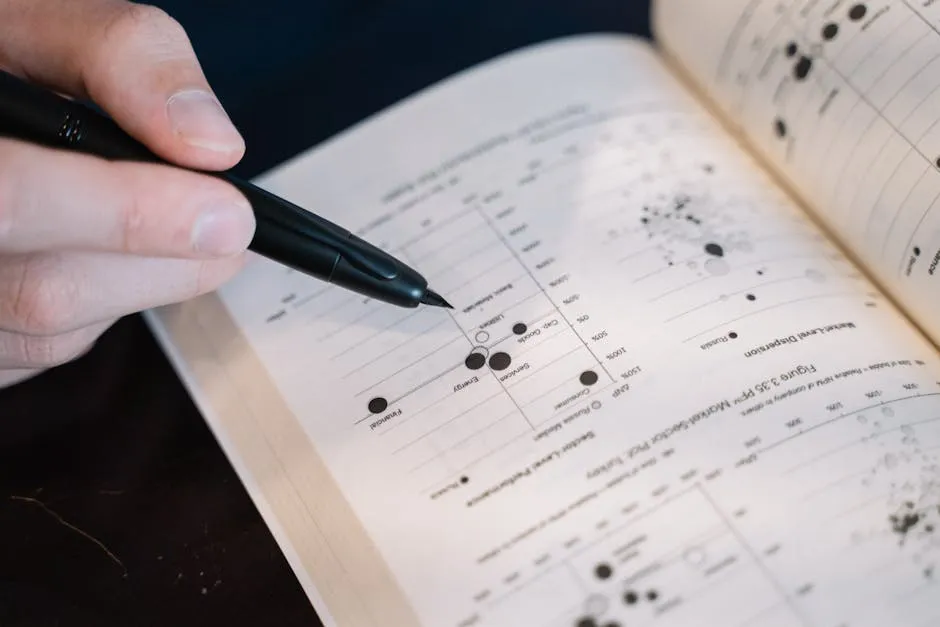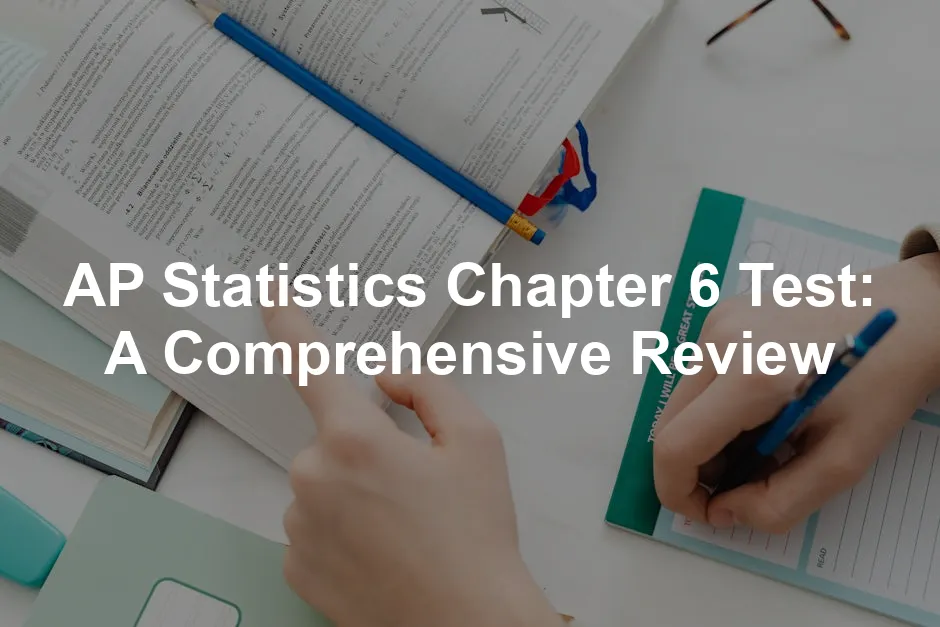Introduction
AP Statistics is not just another math class; it’s a thrilling dive into the world of data. This course equips students with essential skills to interpret data, make predictions, and understand the role of chance in everyday life. In an age dominated by information overload, mastering statistics is like wielding a magic wand. You can analyze trends, understand probabilities, and make informed decisions, all while impressing your friends with your newfound knowledge.
So why is AP Statistics significant? For starters, it prepares students for college-level coursework, fostering critical thinking and analytical skills that are invaluable in various fields. Whether you aim to pursue a career in science, business, or social sciences, a solid foundation in statistics will serve you well. Colleges often view AP courses as a sign of a motivated student, and a good score can even grant you college credit. Talk about a win-win!
Understanding the significance of AP Statistics can lead to valuable opportunities, including college credit for high scores.
The purpose of this article is to guide you through your preparation for the Chapter 6 test, which focuses on probability and random variables. We aim to demystify these crucial concepts, providing you with resources, tips, and a roadmap to success. With the right strategies, you’ll tackle the test with confidence and flair.
What can you expect from this article? We’ll cover the key concepts of probability, including its definition and various types, such as theoretical and experimental probability. We’ll also explore random variables—discrete and continuous—and their practical applications. Along the way, you’ll find examples, anecdotes, and a sprinkle of humor to make your studying a bit more enjoyable. By the end, you’ll be well-equipped to ace that Chapter 6 test and impress your teacher with your statistical prowess.
Let’s get this party started and dive into the key concepts of probability and random variables!

Random Variables
Discrete vs. Continuous Random Variables
Random variables are the backbone of probability. They come in two flavors: discrete and continuous.
Discrete random variables take on specific values. Think of rolling a die. The outcomes (1, 2, 3, 4, 5, or 6) are countable. You can’t roll a 2.5, right? Examples include the number of students in a class or the number of cars in a parking lot.
On the flip side, continuous random variables can take any value within a given range. Imagine measuring the height of students. You might get 5.6 feet or 5.7 feet, or even 5.678 feet. The possibilities are endless! Other examples? Temperature or time are classic continuous random variables.
So, to sum it up: discrete = countable, continuous = measurable. Keep this in mind when you tackle your AP Statistics test!

Expected Value
Now, let’s talk about expected value, often symbolized as E(X). It’s like the average outcome you can expect if you repeated an experiment many times.
Imagine flipping a fair coin. Heads = $1 and tails = $0. The expected value here? \[ E(X) = (0.5 \times 1) + (0.5 \times 0) = 0.5. \] So, on average, you’d expect to win 50 cents per flip.
Why care about expected value? It helps in making informed decisions. Businesses use it to determine potential profits or losses. In simple terms, it’s your crystal ball for predicting outcomes!
To dive deeper into the concepts of statistics, consider grabbing “Probability and Statistics for Dummies”. This book breaks down complex concepts into bite-sized pieces, making it a perfect companion for your studies.

Standard Deviation
Standard deviation measures the spread of a set of values. It tells us how much the values deviate from the mean.
In the context of random variables, a low standard deviation means the values are close to the mean. Conversely, a high standard deviation indicates a wider range of values.
For example, consider the scores of two classes on a test. Class A has scores: 85, 86, 87, and 88. Class B? Scores: 60, 70, 80, and 90. Class A has a low standard deviation, while Class B has a high one. This shows Class B’s scores are more spread out.
Understanding standard deviation is crucial for interpreting data. It allows you to see not just the average, but how consistent or varied the data points are. Knowing this helps you tackle those AP Statistics questions with confidence!
Now that we’ve tackled random variables, let’s jump into the practice questions that will solidify your understanding!

Short Answer Questions
1. What is the probability of rolling a sum of 7 with two dice?
To find this, list all possible combinations of two dice that add up to 7. These combinations are (1,6), (2,5), (3,4), (4,3), (5,2), and (6,1). There are 6 favorable outcomes. Since there are a total of 36 possible outcomes when rolling two dice, the probability is \( \frac{6}{36} = \frac{1}{6} \).
2. Define a discrete random variable and provide an example.
A discrete random variable is one that can take on a finite or countable number of values. For example, the number of students in a classroom is a discrete random variable because you can count the students (0, 1, 2, …).
3. Calculate the expected value for the random variable \(X\) where \(X\) represents the outcome of rolling a fair six-sided die.
The expected value \(E(X)\) is calculated as: \[ E(X) = \frac{1}{6}(1 + 2 + 3 + 4 + 5 + 6) = \frac{21}{6} = 3.5. \] This means that over many rolls, the average outcome is 3.5.
4. Explain what standard deviation measures in a set of data.
Standard deviation quantifies the amount of variation or dispersion in a set of values. A low standard deviation indicates that the values tend to be close to the mean, while a high standard deviation suggests that the values are spread out over a wider range.
5. If the mean number of cars in a household is 2 with a standard deviation of 0.5, interpret the significance of the standard deviation.
The standard deviation of 0.5 indicates that most households have between 1.5 and 2.5 cars. This range shows how much households might vary from the average, helping to understand the spread of car ownership.
6. What is the relationship between probability and odds?
Probability is the chance of an event occurring, expressed as a fraction of total outcomes. Odds, however, compare the number of ways an event can happen to the number of ways it cannot. For instance, if the probability of winning a game is \( \frac{1}{4} \), the odds are 1 to 3 (1 win to 3 losses).
7. Provide a real-world example of a continuous random variable.
An example of a continuous random variable is the height of individuals in a population. Heights can take any value within a range and can be measured accurately to an infinite number of decimal places.

Test Strategies and Tips
Effective Study Techniques
Utilizing Practice Tests
Practice tests are your best friends when prepping for the AP Statistics Chapter 6 test. They help you familiarize yourself with the format and types of questions you’ll encounter. But where do you find these golden nuggets? Check out websites like Quizizz or Khan Academy. They offer a range of practice tests tailored to AP Statistics. By regularly taking these tests, you can identify your strengths and weaknesses. Plus, nothing beats the thrill of answering a question correctly, right?
Study Groups
Studying with peers can turn a dull study session into a lively discussion. Group study sessions allow you to bounce ideas off each other. If someone doesn’t understand a concept, another might have the perfect explanation. Complex concepts become less daunting when tackled with a friend. Plus, you might discover new study techniques that work wonders for you. Just remember to stay focused; we all know how easily study groups can turn into gossip sessions!
Speaking of study tools, an organized workspace can make all the difference. Consider getting a Study Desk Organizer to keep your materials tidy and easily accessible. Less clutter means more focus!

Test-Taking Strategies
Time Management
Time management is crucial during the test. Start by allocating specific time slots for each section. For instance, if you have 90 minutes for the test and 50 questions, aim to answer each question in about a minute and a half. But don’t get stuck on a question! If one question is giving you a headache, move on and come back to it later.
Reading Questions Carefully
Before diving into answering, take a moment to read each question thoroughly. Misreading can lead to silly mistakes. Pay attention to details, especially in questions that involve calculations or logical reasoning. If a question asks for “at least” or “exactly,” make sure you understand what it’s asking.
Practice Makes Perfect
Incorporate these strategies into your study routine. The more you practice, the more confident you’ll feel on test day. Remember, you’ve got this!

Additional Resources
Online Resources
The internet is a treasure trove for AP Statistics preparation. Websites like Quizizz and Khan Academy offer interactive quizzes and video tutorials. Quizizz features fun, gamified quizzes that make learning engaging. It’s perfect for testing your knowledge under pressure! Khan Academy provides in-depth lessons and practice problems that cater to different learning styles.
You can also check platforms like YouTube for playlists dedicated to AP Statistics. Watching videos can clarify complex concepts. Just search for “AP Statistics Chapter 6,” and you’ll find a plethora of helpful content!

Books and Study Guides
Textbooks are your best friends! Look for “The Practice of Statistics” or “Statistics” by David Freedman. These books provide comprehensive coverage of essential topics. They also include practice problems that mimic test conditions.
Don’t forget about study guides! Books like “5 Steps to a 5: AP Statistics” can be invaluable. They break down topics into digestible parts and come with practice tests that prepare you for the real deal.

Tutoring Options
If you find yourself struggling with specific concepts, consider seeking help through tutoring. A tutor can offer personalized attention and tailored lessons that address your weaknesses. Many high schools have peer tutoring programs, or you can find local tutors specializing in statistics.
Online tutoring platforms are another great option. Websites like Wyzant and Chegg Tutors connect you with experienced educators. This extra support can make a big difference in your understanding and confidence as you approach the test.

In summary, leverage these resources to boost your preparation. With the right tools, you’ll walk into that test feeling ready to shine! And don’t forget to keep your study sessions comfortable with a Ergonomic Study Chair—your back will thank you!
Conclusion
In this article, we’ve journeyed through the pivotal concepts of AP Statistics Chapter 6, focusing on probability and random variables. We started with a clear definition of probability, distinguishing between its types. Then, we tackled random variables, breaking them down into discrete and continuous categories. Understanding expected value and standard deviation was also a highlight, showcasing their significance in making informed predictions.

It’s essential to grasp these key points fully. Probability isn’t just numbers; it’s about predicting outcomes in real life! Random variables help you understand how different scenarios play out. Remember, expected value provides insights into what you can anticipate over multiple trials, while standard deviation reveals how consistent or varied your data might be.
Now, as you prepare for your upcoming test, use this knowledge to your advantage. Engage with practice questions, utilize study guides, and don’t hesitate to create or join study groups. Learning collaboratively can often clarify complex topics and make studying less daunting. You have the tools, and now it’s time to put them into action!
As you approach your test date, keep this in mind: practice leads to mastery. Test yourself frequently, revisit tricky concepts, and embrace the learning process. This chapter is just one part of your statistical journey. Keep exploring, practicing, and questioning. Your effort will pay off, not just in passing the test but in gaining skills that are invaluable in everyday decision-making.
Statistics isn’t merely an academic subject; it’s a lens through which we can view and interpret the world around us. So, stay curious and keep learning beyond the test!
FAQs
What topics should I focus on while studying for Chapter 6?
Focus on probability, random variables, expected values, and standard deviation. Understanding these areas is crucial for tackling the test effectively.
How can I best prepare for multiple-choice questions?
Familiarize yourself with the format by taking practice tests. Time yourself to simulate real test conditions. Read each question carefully and eliminate obviously incorrect answers to improve your chances!
What if I struggle with understanding certain concepts?
Don’t hesitate to ask for help! Seek guidance from your teacher, utilize online resources, or form study groups with classmates. Sometimes, a fresh perspective can make all the difference.
Is it necessary to memorize formulas?
While some rote memorization is helpful, understanding the concepts behind the formulas is more crucial. Focus on knowing when and how to apply them rather than just memorizing.
What are the consequences of not performing well on the AP Statistics test?
Poor performance might limit your college credit opportunities. Colleges often look at AP scores to gauge your readiness for college-level coursework. A lower score could impact your placement in future courses, so take it seriously!
Please let us know what you think about our content by leaving a comment down below!
Thank you for reading till here 🙂
All images from Pexels




